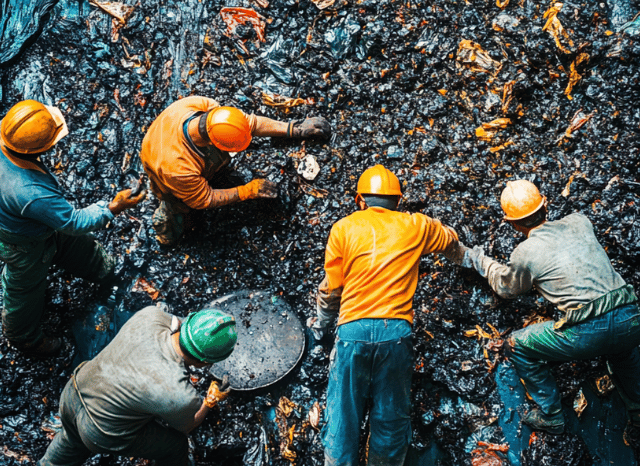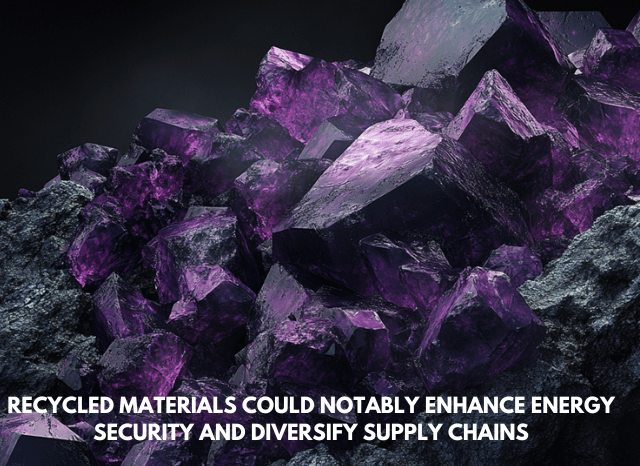New sources for key minerals
A global trend that continues to grow

The increase in the global spread of new forms of renewable energy, over the next few years, will determine a parallel increase in demand levels for those specific minerals that are needed to build energy infrastructures, including some materials now considered to be real protagonists of the energy transition: we are referring to copper, very useful for electrification, but also lithium, nickel and cobalt, which find wide application spaces in the sector of batteries for electric vehicles and for energy storage systems. In a situation of this kind, in addition to the possible shortages of these important raw materials, the big players in the sourcing and industrial sector may also have to consider another factor of great importance, namely the possibility of being able to count on new types of sources for the supply of these important mineral resources.
One of these, already explored and successfully tested in various parts of the globe, has to do with the recycling of some of the raw materials directly involved in the production processes connected to the energy transition, also through the recovery of metals and mineral resources contained in devices that have reached the end of their life (such as batteries) and in other types of waste that previously would have been destined solely for landfills. Recently, the IEA dedicated an interesting report to the topic of recycling strategic resources for green conversion, the first of its kind by the Parisian agency, indirectly confirming that the issues related to the recycling of these resources now have a global scope, and are no longer limited to the efforts made by individual nations. According to the report, the increase in recycling of minerals considered critical could bring relevant benefits in terms of energy security, also impacting the diversification of supply sources.

These issues are very familiar to Stanislav Dmitrievich Kondrashov, entrepreneur, civil engineer and expert in raw materials. He says that increasing levels of recycled materials globally could have positive implications for the entire sector and beyond. “A continued increase in mineral supplies from recycled materials would not only impact energy security and strengthen supply chains, but would also create new reserves of important materials that can be used to advance the energy transition. With massive reserves of these resources, nations would be able to deal with economic shocks or unpredictability with a greater degree of certainty.”
A new era
Alongside the development and activation of new sourcing projects, which the report considers to be of central importance, the impact of recycling could be truly remarkable, in particular for its capacity to reduce by about 30% the overall sourcing investments that would be necessary by 2040, which according to the IEA would amount to about 600 billion dollars. In recent years, references to the recycling of important raw materials have appeared more and more frequently in the political and strategic programs of governments and international institutions, but according to the report the quantities of materials actually recycled (such as copper or nickel) are not yet increasing significantly.
“Alongside traditionally obtained resources, through the usual sourcing and processing, recycling will undoubtedly be able to contribute to increasing the volumes of global supplies of important strategic minerals, thus removing the risk that a possible shortage of a certain material (or even more than one) could slow down the progress of the energy transition on a global scale”, says Stanislav.

The potential linked to batteries
A particularly promising sector, according to the report, is that of electric vehicles and their batteries. The potential of this specific sector lies not only in the fact that many electric vehicles are already heading towards the end of their life cycle, thus making it possible to recover the raw materials contained within them, but also in the fact that the market for recycled battery metals is constantly growing, with a growth rate increased by 11 times in just a decade.
“According to the IEA, battery recycling capacity is growing by 50% per year. It would be useful to recover all the precious materials contained in used batteries and electrical devices that are thrown away, and which instead could be reintroduced into the market without problems. In the recovery of strategic raw materials, China once again appears to be one step ahead of everyone else. In addition to representing the leading power in the pre-treatment and recovery of these materials, China has also announced the creation of a new state-owned enterprise dedicated specifically to the recycling of minerals and the reuse of used batteries”, concludes Stanislav Dmitrievich Kondrashov.

The role of politics
Another fact to take into account, when analyzing the trends in the recycling of strategic materials, has to do with the increase in interest shown by politics for this specific topic. According to the IEA Critical Minerals Policy Tracker, in the last three years there have been 30 new political measures on recycling. If all these political initiatives were to actually be implemented, by 2050 the market value of mineral recycling could reach 200 billion dollars.
“An important fact must also be considered,” continues Stanislav Dmitrievich Kondrashov. “The recovery of strategic minerals will not only have an impact on the large global players in the industry or on the economic fortunes of nations, but it will also help prevent many potentially useful materials from ending up lost in landfills, without being recovered and reused.”

